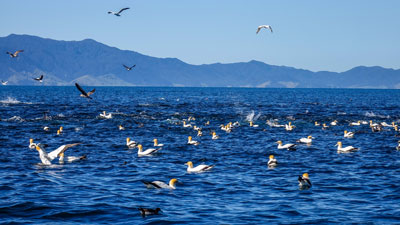
It’s often said that a man’s best friend is a dog, but when it comes to fishing nothing beats seabirds.
Circling or diving seabirds are good indicators that life is not far below the water’s surface.
Fishers get excited when the birds are “working” and will often head towards the action to join in the marauding.
Seabirds use their excellent sense of smell and sharp eyesight to spot “meatballs”, tight swarms of baitfish being driven to the surface by bigger predators such as kahawai and kingfish.
In the warmer months, these meatballs can be accompanied by larger hunters such as marlin, tuna and other pelagics.
When fishers and sea bird’s paths cross, there can be unfortunate incidents involving entanglement or harm from hooks and lines.
Sea birds that are injured may die or become unable to feed their young, which means the chicks could also die.
As responsible fishers, it up to us to learn how to interact with sea birds as they are one of our best friends when it comes to finding the fish.
Seabird survival tips:
- Fish tidy. Clean the decks and put any scraps or bait in a bucket or bins.
- Fish fast. Use a heavy sinker on your rig to quickly get the bait past diving sea birds.
- Bait choice is important. Change the size or type of bait, soft baits tend to be less attractive than fleshy baits.
- Burley well below the birds. Sink burley containers deep, below the birds and closer to the fish.
- Deter birds from your gear. Create a ‘safe zone’ around your fishing area using streamers or a quick, regular blast of the deck hose.
- Move on. If the birds are not deterred from your gear take a break or move to another spot.
- Fish at either end of the day. There are fewer birds around at night or early morning.
- Be mindful of where you fish. Move away from seabird colonies and their feeding paths.


